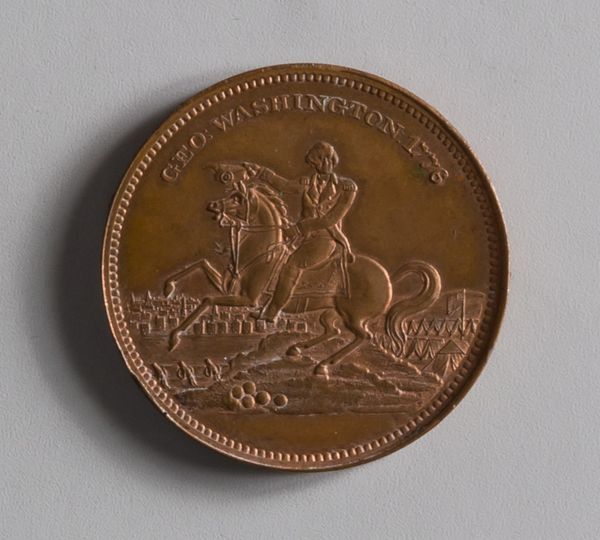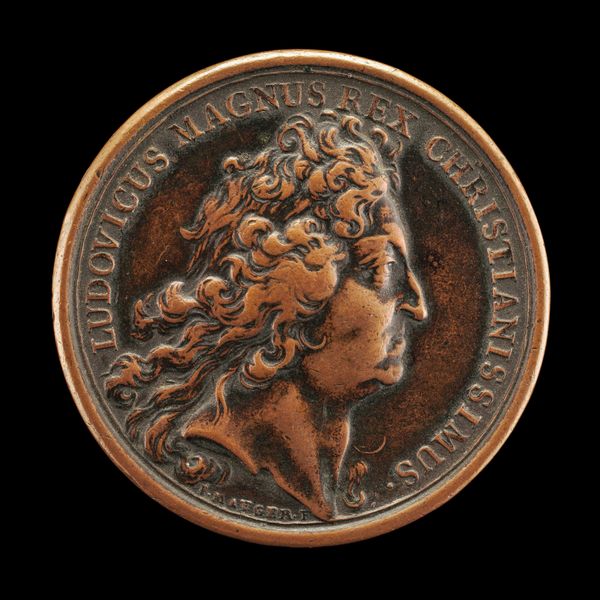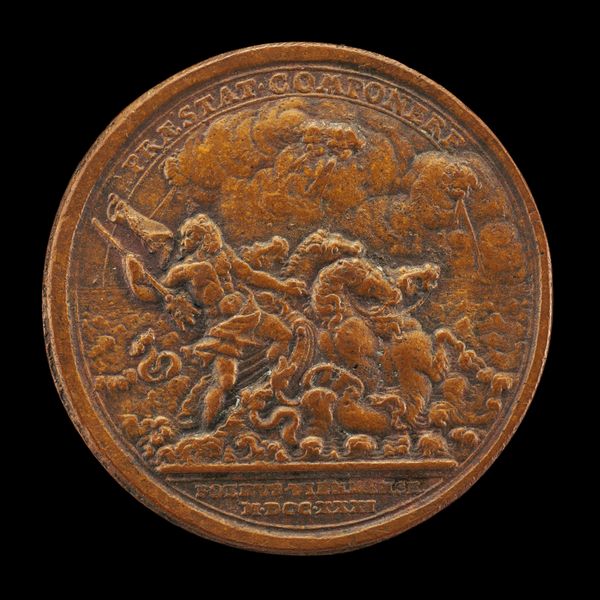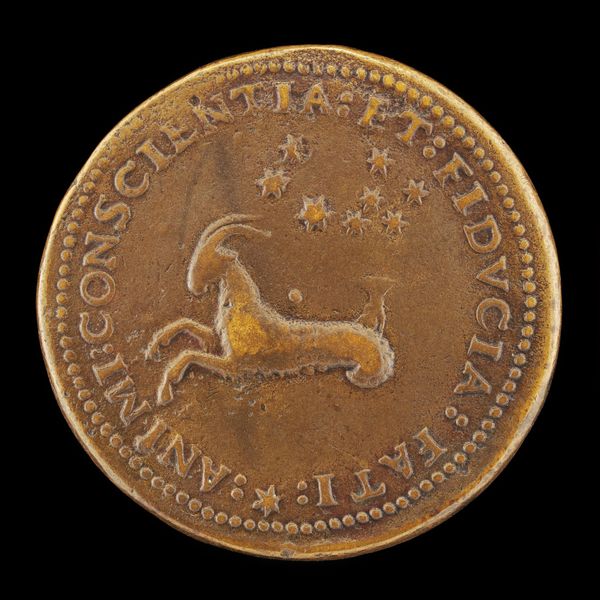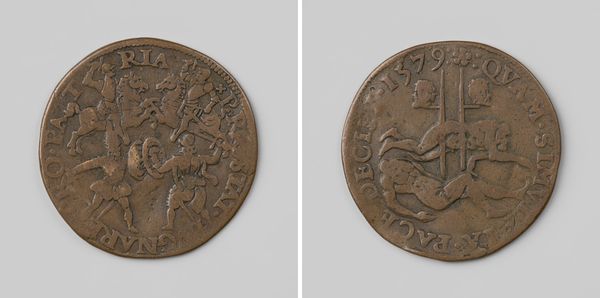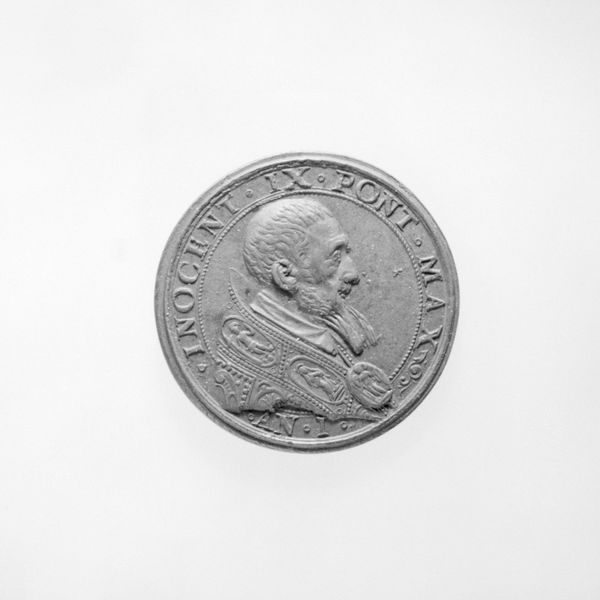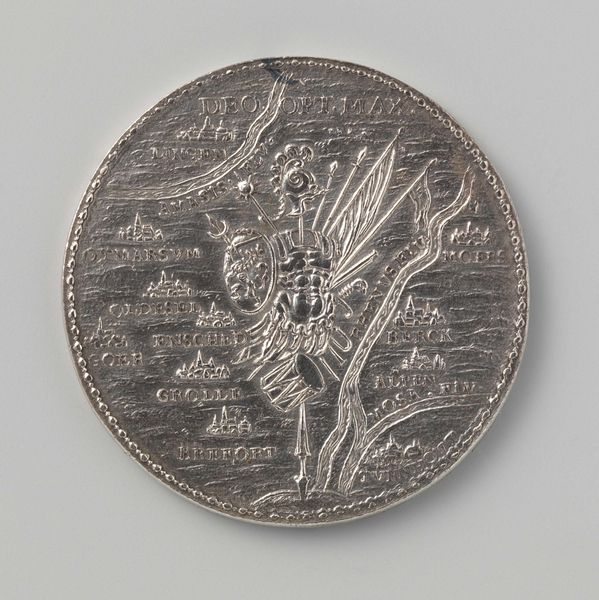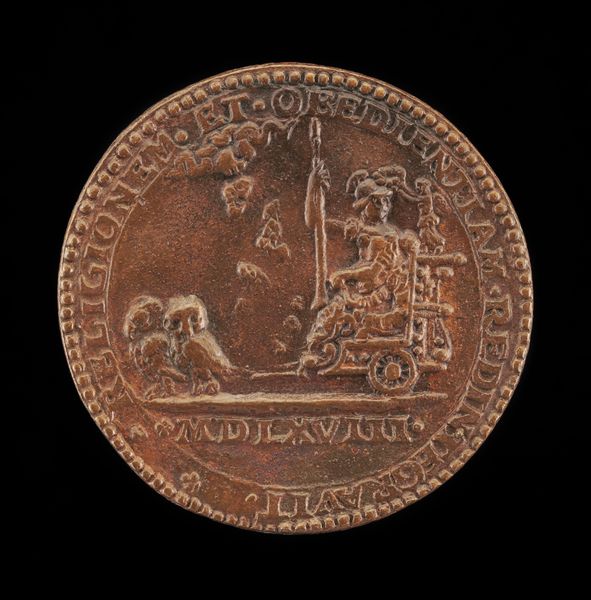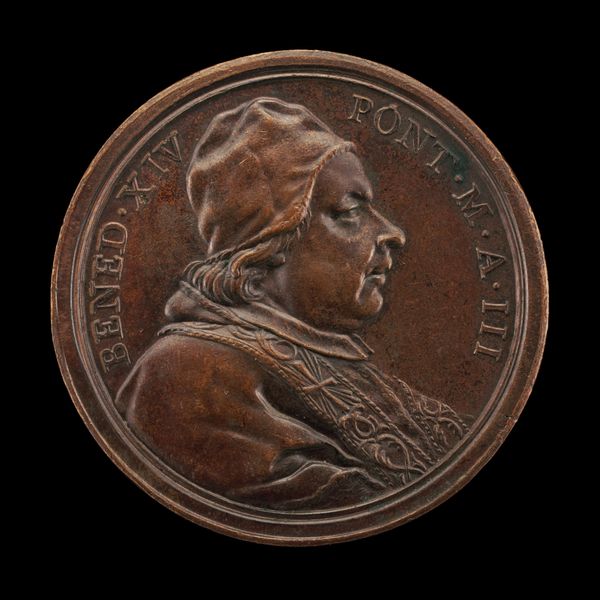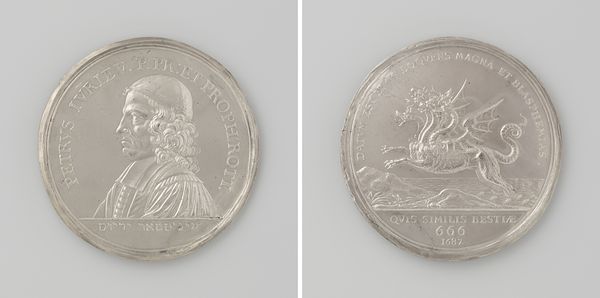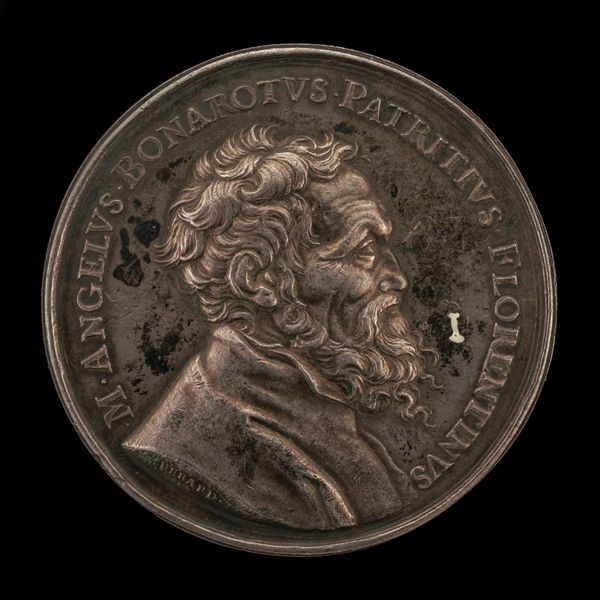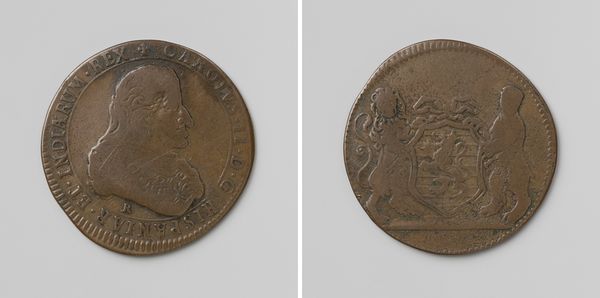![The Infant Hercules Strangling Two Serpents [reverse] by Alfred Joseph Stothard](/_next/image?url=https%3A%2F%2Fd2w8kbdekdi1gv.cloudfront.net%2FeyJidWNrZXQiOiAiYXJ0ZXJhLWltYWdlcy1idWNrZXQiLCAia2V5IjogImFydHdvcmtzLzYxMWE0YzQzLTEyMDQtNDBiZi1hMGYxLWU2MzU3NDE5ZGEwZi82MTFhNGM0My0xMjA0LTQwYmYtYTBmMS1lNjM1NzQxOWRhMGZfZnVsbC5qcGciLCAiZWRpdHMiOiB7InJlc2l6ZSI6IHsid2lkdGgiOiAxOTIwLCAiaGVpZ2h0IjogMTkyMCwgImZpdCI6ICJpbnNpZGUifX19&w=3840&q=75)
The Infant Hercules Strangling Two Serpents [reverse] 1845
0:00
0:00
relief, bronze, sculpture
#
portrait
#
narrative-art
#
stone
#
sculpture
#
relief
#
classical-realism
#
bronze
#
sculptural image
#
figuration
#
sculpture
#
history-painting
Dimensions: overall (diameter): 5.79 cm (2 1/4 in.)
Copyright: National Gallery of Art: CC0 1.0
Curator: Here we have "The Infant Hercules Strangling Two Serpents" rendered in bronze relief. It was created by Alfred Joseph Stothard in 1845. Editor: The scale is intriguing. It looks like a medallion, something meant to be held and turned over in your hands. The texture has a smooth, almost buttery appearance. Curator: It's based on a well-known myth. As a baby, Hercules's stepmother Hera, in a fit of jealousy, sent snakes to kill him, but he strangled them both. It represents innate strength and divine favor overcoming adversity, and points toward Hercules's future heroic destiny. Editor: What I find interesting is the mass production aspect. Medallions like this circulated widely. They weren’t unique art objects, but things made possible by industrial reproduction, spreading the heroic narrative across a much broader segment of the population. This one reads “Art Union of London" suggesting it was commissioned for or by the organization, which produced engravings, and prints, available to subscribers. Curator: Exactly. This small artwork encapsulates profound themes about power and destiny. Serpents have, through time, carried potent symbolic weight representing primal fear, betrayal, chaos—yet here, Hercules triumphs, affirming a narrative of order and civilization overcoming the wild. Editor: Bronze itself adds to the story. The process of smelting, casting, and engraving points to a sophisticated understanding of metallurgy and toolmaking. We also have to consider the work conditions: who labored to produce this piece, and the environment it reflects, its role in cultivating popular notions of art, and culture. It highlights this tension that, perhaps the story itself and the material which it’s made of reinforces a power structure within art itself. Curator: So, both the content and its means of distribution offer pathways to think about society and power at the time. The symbolism taps into archetypes we can still recognize, and the material reality situates that symbolism in the day-to-day lives of people who saw and held these medallions. Editor: A reminder that the most imposing legends can emerge from everyday items produced through labor.
Comments
No comments
Be the first to comment and join the conversation on the ultimate creative platform.

